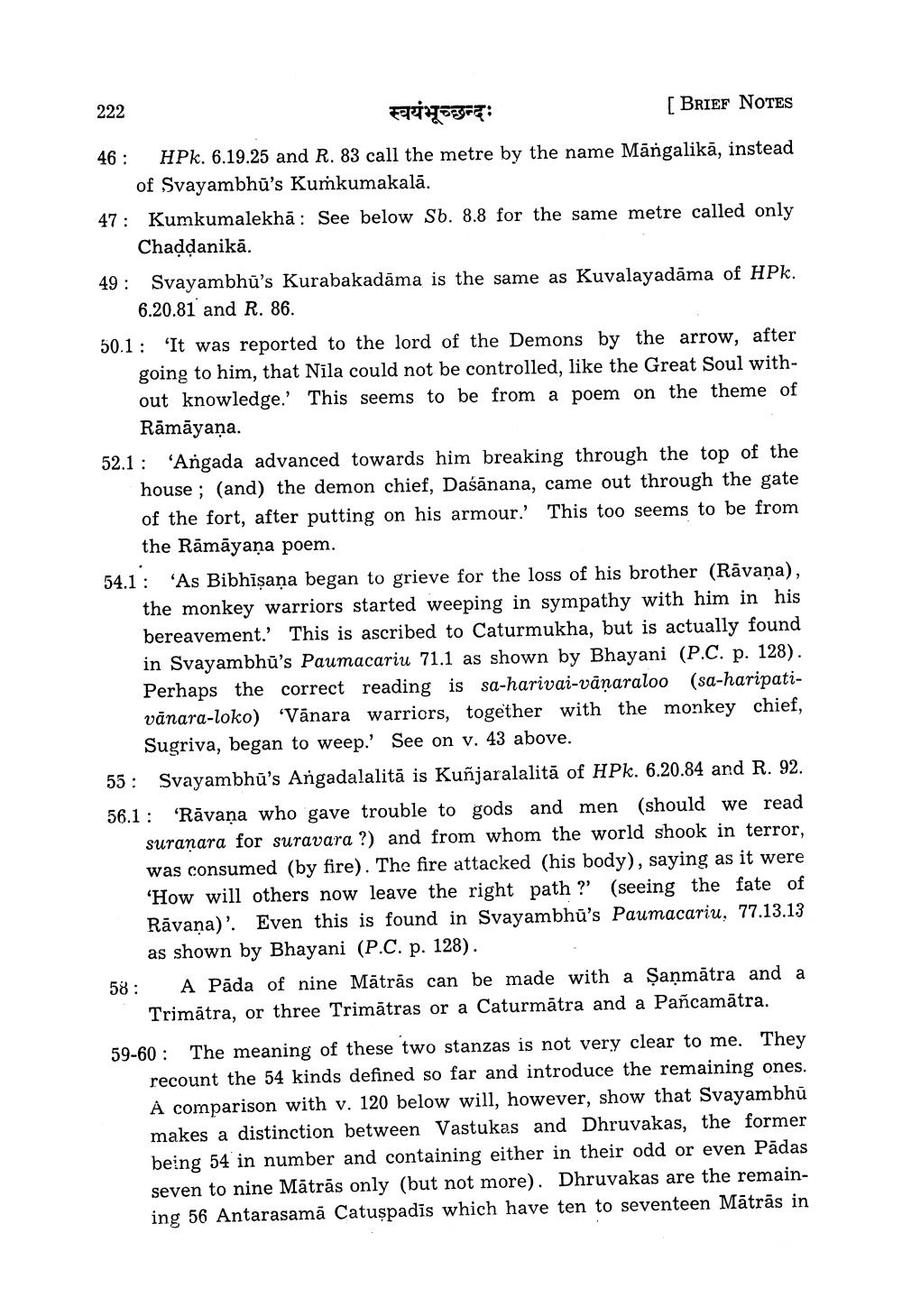________________
222
स्वयंभूच्छन्दः
[BRIEF NOTES 46: HPk. 6.19.25 and R. 83 call the metre by the name Māngalikā, instead
of Svayambhu's Kumkumakalā. 47: Kumkumalekhā: See below Sb. 8.8 for the same metre called only
Chaddanikā. 49: Svayambhu's Kurabakadama is the same as Kuvalayadāma of HPk.
6.20.81 and R. 86. 50.1: 'It was reported to the lord of the Demons by the arrow, after
going to him, that Nīla could not be controlled, like the Great Soul without knowledge. This seems to be from a poem on the theme of
Rāmāyaṇa. 52.1: Angada advanced towards him breaking through the top of the
house ; (and) the demon chief, Daśānana, came out through the gate of the fort, after putting on his armour.' This too seems to be from
the Rāmāyaṇa poem. 54.1: 'As Bibhīşaņa began to grieve for the loss of his brother (Rāvana),
the monkey warriors started weeping in sympathy with him in his bereavement.' This is ascribed to Caturmukha, but is actually found in Svayambhū's Paumacariu 71.1 as shown by Bhayani (P.C. p. 128). Perhaps the correct reading is sa-harivai-vānaraloo (sa-haripativānara-loko) 'Vānara warriors, together with the monkey chief,
Sugriva, began to weep.' See on v. 43 above. 55: Svayambhū's Angadalalitā is Kuñjaralalitā of HPk. 6.20.84 and R. 92. 56.1: "Rāvana who gave trouble to gods and men (should we read
suranara for suravara ?) and from whom the world shook in terror, was consumed (by fire). The fire attacked (his body), saying as it were 'How will others now leave the right path ?' (seeing the fate of Rāvana)'. Even this is found in Svayambhū's Paumacariu, 77.13.13
as shown by Bhayani (P.C. p. 128). 58: A Pāda of nine Mātrās can be made with a Şaņmātra and a
Trimātra, or three Trimātras or a Caturmātra and a Pañcamātra.
59-60 : The meaning of these two stanzas is not very clear to me. They
recount the 54 kinds defined so far and introduce the remaining ones. À comparison with v. 120 below will, however, show that Svayambhū makes a distinction between Vastukas and Dhruvakas, the former being 54 in number and containing either in their odd or even Pädas seven to nine Mātrās only (but not more). Dhruvakas are the remaining 56 Antarasamă Catuspadīs which have ten to seventeen Mātrās in




